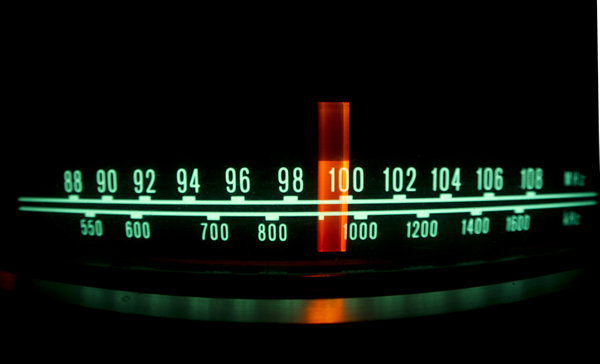AM to FM: Throwing Listeners under the Bus

I’m sure that many regional radio owners in Australia could barely hide their smiles when the prospect of converting their AM stations to FM was first raised.
Moving up to a higher quality technology is one of those prospects that always looks great on paper, but, as with most things, the devil lies in the detail.
As a general rule, radio station owners are pretty smart people.
They know there’s a significant quality difference with FM, but then, so does virtually everybody with ears.
Quality, of course, is the primary reason there’s been such a large audience migration from AM to FM over the past three decades.
Those owners, out in “The Bush”, know if one of their two stations in each market were to remain AM for much longer, the advertising dollars would continue to slide to the FM side of the ledger, and eventually, they’d have to end up subsidising their heritage service.
As sure as night follows day, AM stations will become more of a liability to their owners, as their aging audiences die off and the potential formats, that AMs can be profitably used for, become even more limiting.
Conversely, with two FM stations in each of their solus markets, many station owners reason that they’ll at least have a fighting chance to maintain or even grow advertising revenues.
Understandably, these operators really have no option; they need to be on the conversion bandwagon.
From an outsider’s perspective, this could easily be interpreted as pure self-interest or greed – but it’s not.
These days, regional radio stations are no longer a ‘licence to print money’.
Surviving each day, out in the regions, against all comers, both analogue and digital, is akin to a bare-knuckles brawl, and, when it comes down to it, nothing but revenue will preserve regional radio jobs and help to keep “the Bank” off their backs.
Like any business sector, regional radio broadcasters must take advantage of every perceived opportunity, commercial or technical, to keep their heads above water.
The trouble is the proposed FM conversion process was seen, by some, as a panacea to cure many of regional radio’s ills, when, in reality, it was simply a logical migration in technology.
Most station operators are technical enough to appreciate the coverage differences between AM and FM, but didn’t initially grasp the practical difficulties in entirely replicating their AM service in FM.
Some may have even been expecting the conversion process to be a case of ‘turn one off, turn the other on’, with nearly identical coverage.
Unfortunately, with the different frequencies involved, it doesn’t work that way.
On closer examination, what some regional broadcasters are starting to find out is that if they convert their heritage AM station to FM, a significant slice of their listeners in their service area may no longer be able to hear them.
While there’s no doubting that AM has significantly limited audio quality compared to FM, the AM signal is far more amenable to wide area coverage, and, we’re not just talking about vast outback areas here.
For all intents and purposes, FM is limited to line of sight; it’s a characteristic of the band.
That may be fine for predominantly flat service areas, but hills and valleys can seriously disrupt FM coverage.
Even many coastal areas that push up close to the Great Dividing Range will find that, after conversion, FM shadow areas may need to be in-filled or listeners could be disenfranchised.
It’s one thing for a station to lose listeners because of lousy programming; it’s another to knowingly cut listeners loose or throw them under the bus for expediency.
Afterall, listeners are a rare commodity!
The immediate and most likely fallout from cutting listeners off from their local commercial radio service is going to be political.
Understandably, disenfranchised listeners will likely complain, and, mud will be slung by fearful politicians and others with an axe to grind.
If the industry isn’t careful, all this vitriol is going to pour down in great abundance on the heads of local regional operators.
Back in February, in the U.S., the FCC announced plans for an AM Revitalisation program.
This was a very sensible move, and probably, the Commission’s only real option.
With nearly 5,000 AM stations under its control, the FCC clearly realised that converting them all to equivalent-powered FM services was just not going to be practical.
So, they set about encouraging these AM stations to acquire FM translators, allowing operators to move those translator licences back into their own service areas up to 400 kilometres away.
In FCC-speak, this is known as ‘the 250-Mile Rule’.
Even in competitive American markets where heritage AM stations have been waging a losing battle against comparatively-new FM services, these AMers are now being allowed to buy and move FM translators into their primary service town or city.
This allows them to begin competing on a level playing field with the FMers, at least as far as audio quality goes.
These AM operators are also free to acquire additional FM translators and relocate them almost anywhere within their service area to supplement their existing AM service.
Despite the addition of any of these supplementary services, the heritage stations will still retain their wide area AM coverage for the benefit of their traditional listeners.
Admittedly, the US scenario is a different kettle of fish from Australia, where conversion is only required on around 100 commercial AM stations at this time, but the FCC is working towards merging the quality of FM and the wide area coverage of AM to provide the best possible service for the listener.
After looking at the potential coverage issues that could arise with the currently proposed AM/FM conversion process in Australia, a number of respected regional broadcasters are now starting to see a good deal of wisdom in the U.S. scheme and are asking why it can’t happen here.
Certainly, I agree we need to move with the times by upgrading technology whenever possible, and, in denser regional population centres, listeners should be entitled to the quality of FM.
However, where other listeners could possibly be left without any access to their local commercial radio service, I don’t believe that ACMA should be making it mandatory to surrender the AM licence, when a heritage station converts to FM, even if that conversion is at the AM’s full power equivalent.
Where there is a genuine need for continuing wide area coverage, the option to retain AM coverage should be readily available to the broadcaster to allow them to provide a service to all their listeners.
Maintaining AM coverage would help overcome the need for in-fills in blackspots that may be created through FM conversion.
Surely, guaranteeing a better service for listeners should be what ACMA’s role in all about.
I’m aware of a number of stations that have opted not to join in the current AM/FM conversion process because they assessed from the outset that, after conversion to FM, they would no longer be able to adequately cover their current licence area.
Other operators, who were simply enamored with the idea of jumping from AM to FM at any cost, are now starting to find cracks in the process that may one day come back to haunt them.
Those broadcasters, who opted out of the conversion process because of the ‘surrender your AM licence’ demand, were the ones who realised that although their listeners in their main population centres may not gain the benefit of programming in high quality FM, there were also many other people further out, in less populated areas, who, each day, rely on their local AM radio service for emergency warnings and local information.
Without that AM service, some of those listeners may no longer have access to that information.
To me, this dogmatic ‘one or the other’ bureaucratic approach is nonsense.
There appears to be no justifiable reason why, in 2016, both the quality and coverage requirements can’t be mutually satisfied.
A number of regions immediately come to mind where AM & FM technologies, with their separate benefits, should clearly be used to complement each other for the benefit of listeners.
Mountainous areas like, Lithgow and the Hunter Valley in NSW, and Cairns in Queensland, and Portland in Victoria, and, in flat, widespread service areas like Queensland’s Longreach and Charleville, and, Kalgoorlie and Karratha in the West could all be beneficiaries of a flexible and intelligent approach to broadcast spectrum management.
Sure, I generally agree that a conversion from AM to FM is a sensible approach to improve service quality for the majority of listeners in regional service areas, but in committing to this conversion, surely, in this day and age, when we have the advantages of both technologies right at our fingertips, shouldn’t we be using the advantages of each to ensure that no listener, in this great nation, will ever get left behind.
About The Author:
Brad SMART has been a journalist, consultant, author, broadcaster, film director and was the former owner of the Smart Radio Network throughout Queensland. Brad can be contacted on his website here.


